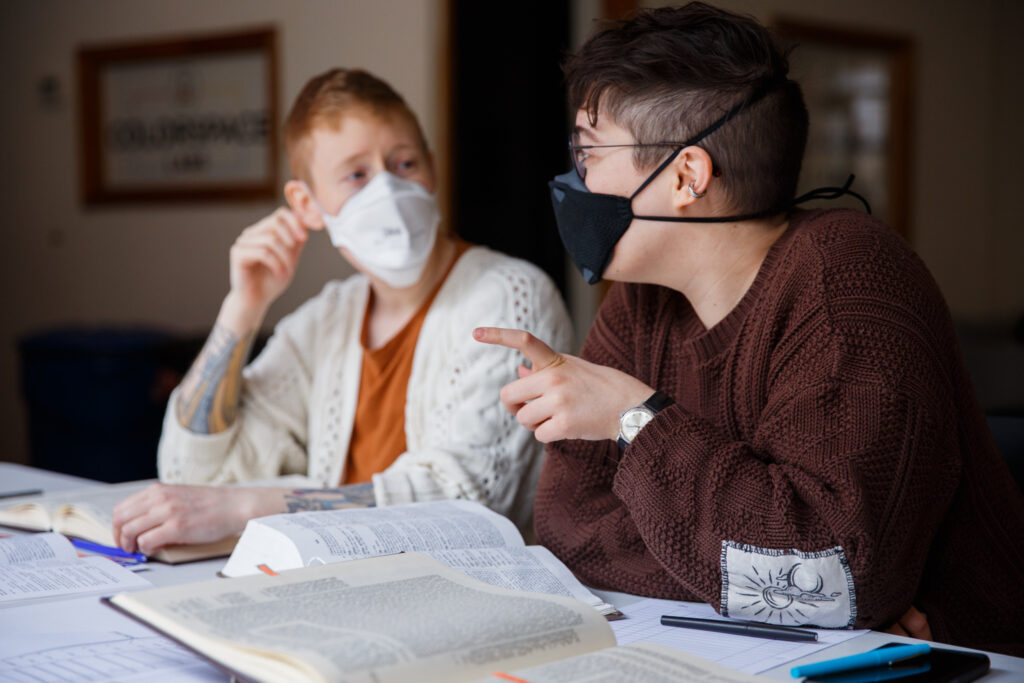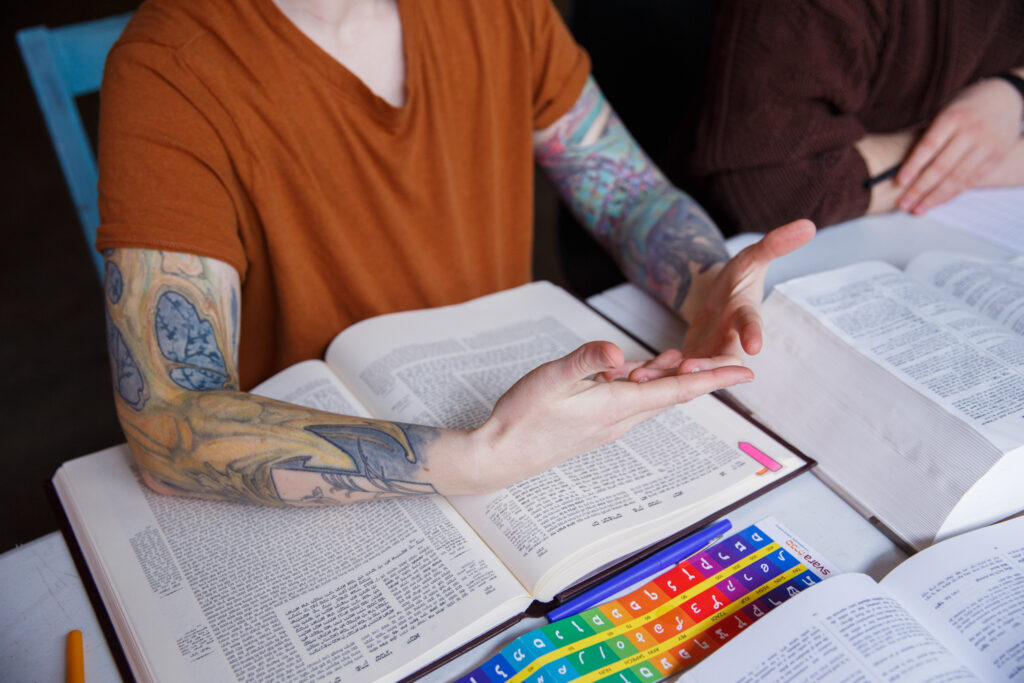One of the most powerful moments in a SVARA Bet Midrash happens at the first session of class, just as we are about to begin to study Talmud for the first time. If we’re in person, the facilitator and fairies present a masechet/volume of Talmud to each learner, connecting with them directly, saying, “This is yours! Mazal tov!” If we’re on-line, we pause for a moment and ask: “Is this your first masechet?”
In the class that I’m teaching, Queer Talmud for Beginners Mind (the SVARA Bet Midrash for folks who are brand new to Talmud and/or SVARA-method learning), this *is* the first time for the majority of our learners and the excitement is palpable. With full hearts, the fairies and I communicate, “This is yours! We have faith in you as learners and teachers. We trust you to take hold of this tradition…to learn with and from it…and to move the tradition forward through the svara you will bring to it!”
To mark this amazing first, we pause for a moment and, together, recite the Shehechyanu, our ancestral blessing that takes note of a new or unusual experience – tasting a first fruit of the season, the beginning of a holy day, or experiencing something important for the first time.
ברוך אתה יי אלהינו מלך העולם שהחינו וקימנו והגיענו לזמן הזה
Blessed is the Source of All, Ruler of Time and Space,
who has given us life and sustained us,
and allowed us to reach this day.
The three words that ground this blessing all hint at sustenance:
(שהחינו (חיי – to live … and in pi’el: to keep alive, sustain
וקימנו (קום) – to exist, to rise…and in pi’el: to establish, attest, identify; to fulfill, to sustain
והגיענו (נגע) – to touch..and in hif’il: to cause/allow to reach
This session, as I took in the faces on my Zoom screen, shining and nervous and excited, and joined in the collective recitation of the Shehecheyanu, I was transported in memory to my first Queer Talmud Camp. I remembered R. Benay presenting my first masechet to me — and how overcome with emotion I was. The kindness and love in her gaze quieted my inner skeptic (“Really? This is for me? I can’t!”), as did her obvious belief that all of us not only deserved full access to our tradition, but that our tradition would be stronger, more vibrant, honest, radical, and creative because of our engagement. Amazing!!
And in that moment, past and present colliding, I realized that, of the many Jewish experiences, rituals, observances, and study that I have engaged in, Talmud is the only piece of Judaism that I have been offered with unbounded, optimistic faith in me—my whole, queer, feminist self.
I grew up in a small, suburban town in the Bay Area in the 1960s and 70s. Along with the handful of other Jewish families who lived in our town, my siblings and I attended Hebrew and religious school, Jewish summer camp, and observed holy days at home and at our temple. From a young age, I was, in the words of a close friend, “susceptible” to religion. I loved prayer – especially musical prayer – and happily accompanied my mom to services in preparation for my Bat Mitzvah ceremony. I was drawn to the ritual, the melodies, and the emotion I saw reflected in the cantor’s face as he led prayers/t’fillot. And yet, as I claimed a budding feminist identity in elementary school, I was dismayed to see that the gender role stereotypes and boundaries that were being challenged in the “outside” world were strongly present and limiting in my Jewish life. My yearning neshama/soul and my political sensibilities were constantly in conflict. I was told that synagogue prayer experience was central to one’s identification as a Jew—but that I could not be a ritual leader because of my gender. In our (California) Conservative shul, I could have a Bat Mitzvah celebration, but not on a Saturday morning. I could even chant from the Haftorah/prophetic writings on a Friday evening (huh?), but was not allowed to read from the Torah. The message? Here is “our” sacred tradition – it’s yours…kind of. And we certainly don’t trust you to claim it, wrestle with it, or innovate it in a way that makes room for everyone who feels called to its teachings.
In the decades that followed, my dance with Judaism was full of fits and starts, pulling away and drawing close again. The thrill of holding a Torah for the first time (I was almost 30!); marking liminal life moments with Jewish ritual; learning the prayers that had spoken to my heart as a child; and, finally, taking my place as a leader and teacher of Jewish prayer and ritual…these were incredible moments, yet all required years of reframing, unlearning, and healing from the disappointment and dissonance of the past.
In our SVARA community, I feel whole, seen, embraced, and celebrated – and incredibly lucky to provide an unqualified welcome to every learner in our Bet Midrash! From that place, I invite you to join me for another Shehecheyanu. The energy of this blessing is time-out-of-time … an eddy of stillness and quietude … a long, slow breath. In that expanse, we connect this moment with our experiences of the past – the pain and beauty that have brought us here, the strength and healing we have cultivated – and the future that will be. Stopping. Noticing. Taking in all in. Extending compassion to the self of our past…honoring the self that is here and now…and blessing ourselves into our unimaginable future, full of promise and as yet unknown firsts.
Blessed is the Source of All, Ruler of Time and Space,
who has sustained our life force, strengthened us,
and helped us reach this moment of healing, amazement, and possibility.







